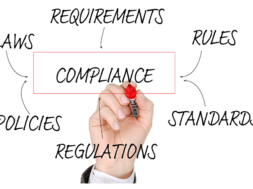
Distance learning compliance changes are coming on July 1. Is your career institute ready?
The Department of Education issued new distance learning compliance regulations for career colleges defining regular and substantive interaction, academic engagement, and clock hours in online courses.
In September 2020, the U.S. Department of Education updated Title 34 of the Code of Federal Regulations, revising distance learning requirements for career colleges effective July 1, 2021.
While the new requirements include a variety of changes to Title 34, compliance leaders at career institutes should focus on four changes:
- Providing additional guidance in applying clock hours and credit hours in distance education
- Defining “academic engagement” in distance education programs
- Defining “regular and substantive interaction” in distance education programs
- Clarifying the difference between distance education courses and correspondence courses
The new policies are less than a month away—will your school remain compliant? Read on to learn what these changes mean for you.
Updated definition of a clock hour for distance learning compliance
The amended definition of a clock hour in distance education is 50 to 60 minutes of attendance during 60-minutes of:
- “An asynchronous or synchronous class, lecture, or recitation where there is opportunity for direct interaction between the instructor and students”
- “An asynchronous learning activity involving academic engagement in which the student interacts with technology that can monitor and document the amount of time that the student participates in the activity”
The biggest takeaway from the new regulations for asynchronous clock hour learning is that logging in alone never counts as part of a clock hour. Schools must utilize a technology, like an LMS, that captures all activity within an academic portal, documenting everything a student does within a specific timeframe. To remain compliant, an institution must monitor student engagement to ensure interactivity for 50 out of 60 minutes of each clock hour.
Updated definition of academic engagement for distance learning compliance
As more schools embrace online and blended/hybrid learning programs, the Department is updating the definition of academic engagement within these programs.
The new definition of academic engagement is “[a]ctive participation by a student in an instructional activity related to the student’s course of study,” as defined by the institution per accreditation requirements.
Academic engagement in online or blended learning programs includes, but is not limited to:
- “Submitting an academic assignment.”
- “Taking an assessment or exam.”
- “Participating in an interactive tutorial, webinar, or other interactive computer-assisted instruction.”
- “Participating in a study group, group project, or an online discussion that is assigned by the institution.”
- “Interacting with an instructor about academic matters.”
Academic engagement in online learning does NOT include logging in to an online class or tutorial without further participation. Instructors must monitor and document engagement to ensure compliance. Schools must monitor student engagement with assignments.
Definition of regular and substantive interaction for distance learning compliance
With the new definition of distance learning requiring “regular and substantive interaction,” the Department also defined what regular and substantive interaction means. While this idea is not new, the definition seeks to address ambiguity around the phrase.
The definition of substantive interaction in distance learning is “engaging students in teaching, learning, and assessment, consistent with the content under discussion.” It must include at least two of the following:
- “Providing direct instruction.”
- “Assessing or providing feedback on a student’s coursework.”
- “Providing information or responding to questions about the content of a course or competency.”
- “Facilitating a group discussion regarding the content of a course or competency.”
- “Other instructional activities approved by the institution’s or program’s accrediting agency.”
The definition of regular interaction is “the opportunity for substantive interactions with the student on a predictable and scheduled basis commensurate with the length of time and the amount of content in the course or competency.” Career colleges are also responsible for monitoring a student’s academic engagement and success, “ensuring that an instructor is responsible for promptly and proactively engaging in substantive interaction with the student when needed on the basis of such monitoring, or upon request by the student.”
One way career institutes can ensure compliance with these regulations is by empowering instructors with an engagement technology that provides and documents regular and substantive interaction opportunities.
Updated difference between correspondence versus distance learning
The new regulations update the definitions of distance education and correspondence courses to better distinguish between the two formats.
A correspondence course is when “the institution provides instructional materials, by mail or electronic transmission, including examinations on the materials, to students who are separated from the instructors.” Interaction in a correspondence course is limited, not regular and substantive, and initiated by a student.
A distance education course supports “regular and substantive interaction between the students and the instructor or instructors, either synchronously or asynchronously” using one or more technologies, including video conferencing and online learning activities. Instructors must engage in at least two forms of substantive interaction during each course. The frequency and combination of interactions are up to the instructor as long as they are “predictable and scheduled.”
A webinar by Federal Student Aid said that to evaluate an institution’s use of distance education, the Department will verify:
- Career college online instruction is delivered through an appropriate form of media.
- Course instructors meet accreditation requirements for instruction in the subject matter.
- Instructors engage in at least two forms of substantive interaction, meeting the requirements for course competency.
- The instructor has scheduled and predictable opportunities for interaction between students and instructors. Instructors must monitor each student’s engagement by:
- Evaluating participation in synchronous classes
- Monitoring student activity on course materials
- Evaluating the quality of coursework and understanding
- Instructors are responsive to students’ requests for instructional support.
To comply with the new definition of distance learning, schools must comply with the definition of regular and substantive interaction while using a diverse set of instructional media.
Keep your career institute compliant
Many schools have already established policies that define what engagement looks like in clock-hour, clock to credit, and credit-hour programs. The Department will ask schools to report how they enforce their policies during the eligibility and recertification process.
Regulations regarding clock hours and academic engagement vary on a state-by-state basis. While the federal government offers some flexibility into how your school monitors engagement, accreditors may have more specific regulations. Connect with your accreditors to ensure your school is prepared come July 1.
If you’d like to learn more about how CourseKey can help your school manage compliance, request a demo.







